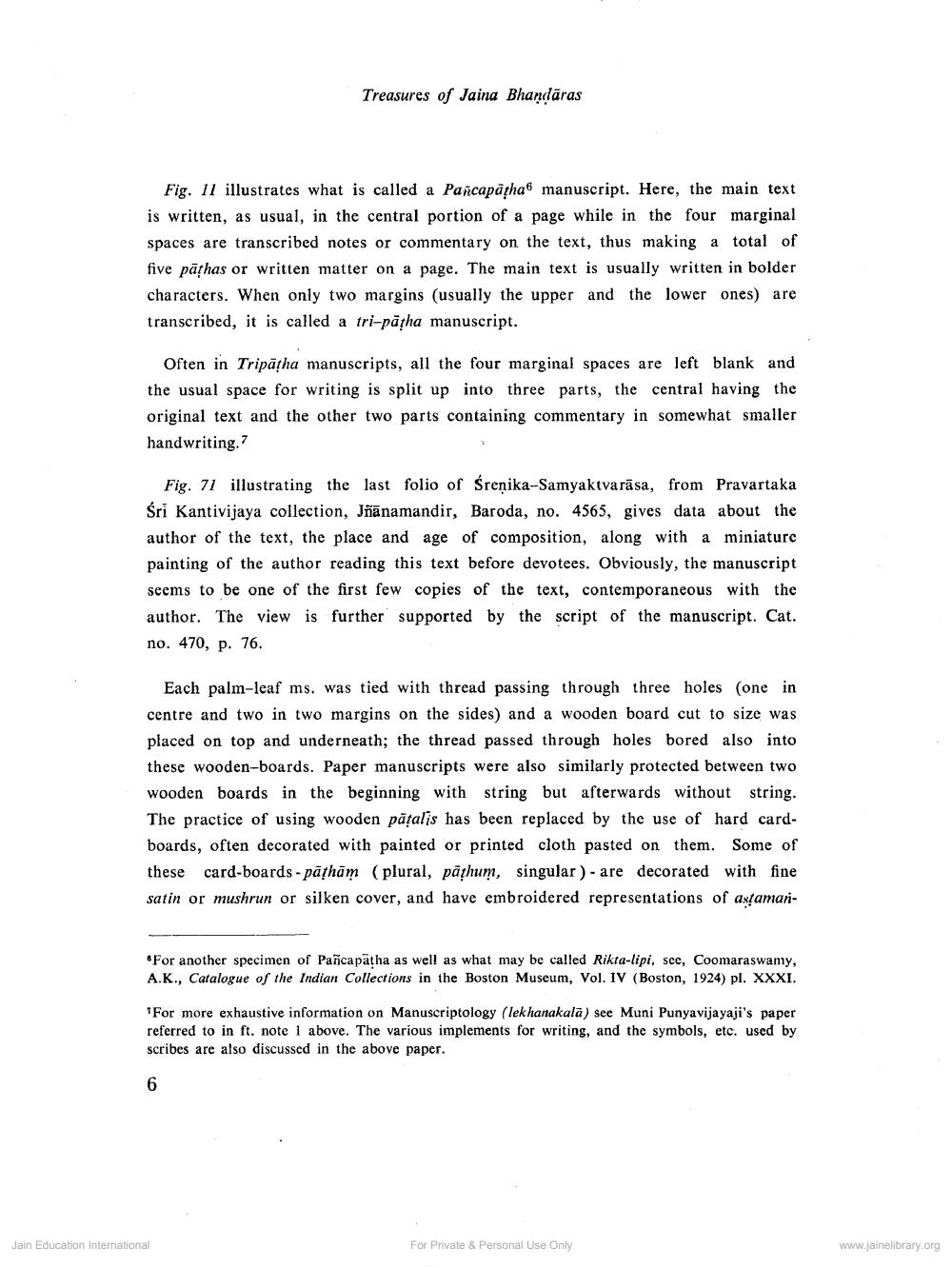________________
Treasures of Jaina Bhandāras
Fig. 11 illustrates what is called a Pancapāțha manuscript. Here, the main text is written, as usual, in the central portion of a page while in the four marginal spaces are transcribed notes or commentary on the text, thus making a total of five pāfhas or written matter on a page. The main text is usually written in bolder characters. When only two margins (usually the upper and the lower ones) are transcribed, it is called a tri-pāha manuscript.
Often in Tripātha manuscripts, all the four marginal spaces are left blank and the usual space for writing is split up into three parts, the central having the original text and the other two parts containing commentary in somewhat smaller handwriting.?
Fig. 71 illustrating the last folio of Śrenika-Samyaktvarāsa, from Pravartaka Sri Kantivijaya collection, Jnānamandir, Baroda, no. 4565, gives data about the author of the text, the place and age of composition, along with a miniature painting of the author reading this text before devotees. Obviously, the manuscript seems to be one of the first few copies of the text, contemporaneous with the author. The view is further supported by the script of the manuscript. Cat. no. 470, p. 76.
Each palm-leaf ms. was tied with thread passing through three holes (one in centre and two in two margins on the sides) and a wooden board cut to size was placed on top and underneath; the thread passed through holes bored also into these wooden-boards. Paper manuscripts were also similarly protected between two wooden boards in the beginning with string but afterwards without string. The practice of using wooden pātalis has been replaced by the use of hard cardboards, often decorated with painted or printed cloth pasted on them. Some of these card-boards - pāíhām (plural, pāțhum, singular ) - are decorated with fine satin or mushrun or silken cover, and have embroidered representations of axļamar
For another specimen of Pancapatha as well as what may be called Rikta-lipi, sce, Coomaraswamy, A.K., Catalogue of the Indian Collections in the Boston Museum, Vol. IV (Boston, 1924) pl. XXXI.
For more exhaustive information on Manuscriptology (lekhanakala) see Muni Punyavijayaji's paper referred to in ft. note 1 above. The various implements for writing, and the symbols, etc. used by scribes are also discussed in the above paper.
Jain Education International
For Private & Personal Use Only
www.jainelibrary.org




